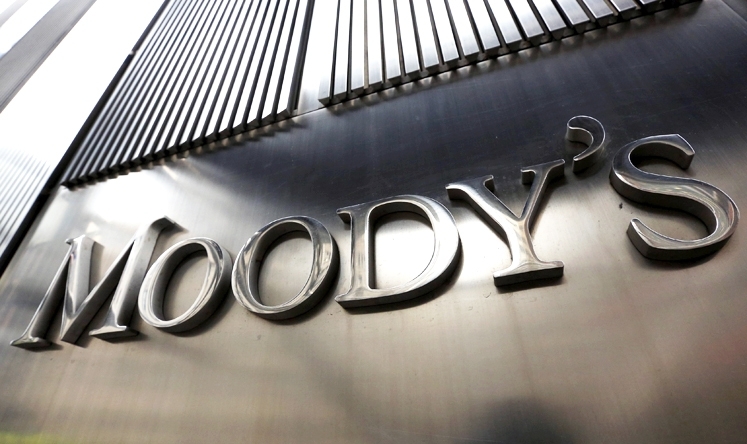
Moody’s Investors Service has assigned a provisional rating of (P) B1 to the proposed bond issue by the Republic of Ghana.
The bond is enhanced by a partial guarantee provided by the International Development Association (IDA, unrated) which shall be the lesser of $400 million and forty percent of the face value of the bond. Ghana’s issuer rating is B3 with a negative outlook.
Moody’s expects to remove the provisional status of the rating upon the closing of the proposed issuance and a review of its final terms.
Separately, the government of Ghana has approvals to issue an additional Eurobond in 2015 without guarantee. Moody’s will assign a provisional rating of (P) B3 in line with the issuer rating to subsequent bond issues upon review of the provisional terms.
RATINGS RATIONALE
Conditional on Ghana’s successful completion of an IMF review mission, on 30 June the World Bank (IBRD, Aaa stable) approved the first Policy-Based Guarantee (PBG) via its IDA arm, offering Ghana a partial bond guarantee of up to $400 million to facilitate the sovereign’s access to external funding of up to $1 billion.
The partial guarantee is unconditional and irrevocable subject to the Deed of Guarantee in the preliminary prospectus dated 21 September 2015, and covers outstanding interest payments on a rolling basis up to the guarantee limit before providing coverage of principal payment which will be repaid in three equal instalments. In line with the instrument’s policy-based conditionality, the use of proceeds is intended to support the government of Ghana’s medium term debt management strategy by allocating the net proceeds to the repayment of outstanding domestic debt without increasing the overall stock of debt.
The partial guarantee provides for recovery on up to forty percent of the bond’s value in the event of default, while the other sixty percent of the bond’s value remains exposed to credit risk of the Government of Ghana. Ghana has an obligation to reimburse IDA for any called guarantee under the Indemnity Agreement.
As a result of preferred creditor status, Ghana may prioritise IDA and other preferred creditor liabilities ahead of all commercial lenders during a time of debt distress. An effective forty percent reduction in the expected losses on this bond is consistent with two notches of uplift to B1 from B3. Absent the partial guarantee, the bond would have been rated (P)B3 in line with the issuer rating.
ISSUER RATING RATIONALE AND OUTLOOK
The Republic of Ghana’s B3 rating reflects adverse debt dynamics as highlighted by an increasing debt burden due to large fiscal imbalances and a sharp weakening of the country’s national currency, combined with reduced debt affordability stemming from a high cost of funding in the domestic market. It also takes into account high government liquidity risks, as the government faces large gross borrowing requirements amid more difficult domestic and external funding conditions.
The negative outlook assigned on 19 March 2015 reflects further downside risk to the country’s debt dynamics and liquidity pressure in the short-term if the country’s policies fail to successfully contain its fiscal deficit, stabilize its currency and address current impediments to higher economic growth, such as power shortages. It also captures the uncertainty generated by the maritime border dispute with Côte d’Ivoire for the development and exploitation of the TEN oil field which the government expects to come on-stream in the second half of 2016.
WHAT COULD CHANGE THE RATING UP/DOWN
Downward pressure on Ghana’s B3 rating could arise from factors that include (1) extended delays in fiscal consolidation or in the resolution of the power crisis; (2) a sustained decline in oil or gold prices that would put further downward pressure on fiscal revenues and export receipts; (3) sustained loss of market access; (4) continued pressure on the balance of payments and on international reserves.
A return to a stable outlook could develop as a result of: (1) sustained fiscal consolidation that would stabilize the government’s debt burden, supporting a gradual reduction over the medium term; (2) a strengthening of FDI inflows as a source of funding for the country’s large power and infrastructure investment needs; (3) a bolstering of Ghana’s foreign-exchange and/or fiscal reserves that would reduce the country’s vulnerability to domestic or external shocks.
Ghana has successfully completed the first review under the 3-year IMF Extended Credit Facility arrangement in August 2015, and budget execution data to July 2015 confirm Ghana’s progress in fiscal consolidation by posting a cash deficit of 3.1% of GDP against a 4.0% deficit in the budget.
Moreover, retiring a sizable portion of high-cost domestic debt via the PBG will provide a degree of relief from the elevated liquidity pressures Ghana is currently experiencing, which were a primary driver in the March 2015 downgrade and negative outlook rating action. This liquidity benefit is somewhat offset by increased currency and medium-term rollover risk associated with increased reliance on external creditors.
GDP per capita (PPP basis, US$): 4,129 (2014 Actual) (also known as Per Capita Income)
Real GDP growth (% change): 4.0% (2014 Actual) (also known as GDP Growth)
Inflation Rate (CPI, % change Dec/Dec): 17.0% (2014 Actual)
Gen. Gov. Financial Balance/GDP: -10.2% (2014 Actual) (also known as Fiscal Balance)
Current Account Balance/GDP: -9.6% (2014 Actual) (also known as External Balance)
Level of economic development: Moderate level of economic resilience
Default history: No default events (on bonds or loans) have been recorded since 1983.
On 17 September 2015, a rating committee was called to discuss assigning a provisional rating to the forthcoming US-denominated bond offering of Ghana, Government of, enhanced by a partial guarantee provided by the International Development Association which shall be the lesser of $400 million and forty percent of the face value of the bond.
The main points raised during the discussion were: The committee discussed the nature of the obligation and concluded that the forthcoming issuance would reduce expected losses by an effective forty percent on the bond which is consistent with two notches of uplift to B1 from B3. It would also rank pari passu with other senior unsecured debt issued by the Government of Ghana.
The principal methodology used in this rating was Sovereign Bond Ratings published in September 2013. Please see the Credit Policy page on www.moodys.com for a copy of this methodology.
The weighting of all rating factors is described in the methodology used in this rating action, if applicable.
REGULATORY DISCLOSURES
For ratings issued on a program, series or category/class of debt, this announcement provides certain regulatory disclosures in relation to each rating of a subsequently issued bond or note of the same series or category/class of debt or pursuant to a program for which the ratings are derived exclusively from existing ratings in accordance with Moody’s rating practices.
For ratings issued on a support provider, this announcement provides certain regulatory disclosures in relation to the rating action on the support provider and in relation to each particular rating action for securities that derive their credit ratings from the support provider’s credit rating.
For provisional ratings, this announcement provides certain regulatory disclosures in relation to the provisional rating assigned, and in relation to a definitive rating that may be assigned subsequent to the final issuance of the debt, in each case where the transaction structure and terms have not changed prior to the assignment of the definitive rating in a manner that would have affected the rating. For further information please see the ratings tab on the issuer/entity page for the respective issuer on www.moodys.com.
For any affected securities or rated entities receiving direct credit support from the primary entity(ies) of this rating action, and whose ratings may change as a result of this rating action, the associated regulatory disclosures will be those of the guarantor entity.
Exceptions to this approach exist for the following disclosures, if applicable to jurisdiction: Ancillary Services, Disclosure to rated entity, Disclosure from rated entity.
Regulatory disclosures contained in this press release apply to the credit rating and, if applicable, the related rating outlook or rating review.
Please see www.moodys.com for any updates on changes to the lead rating analyst and to the Moody’s legal entity that has issued the rating.
Please see the ratings tab on the issuer/entity page on www.moodys.com for additional regulatory disclosures for each credit rating.
Source: Moody’s Investors Service



























